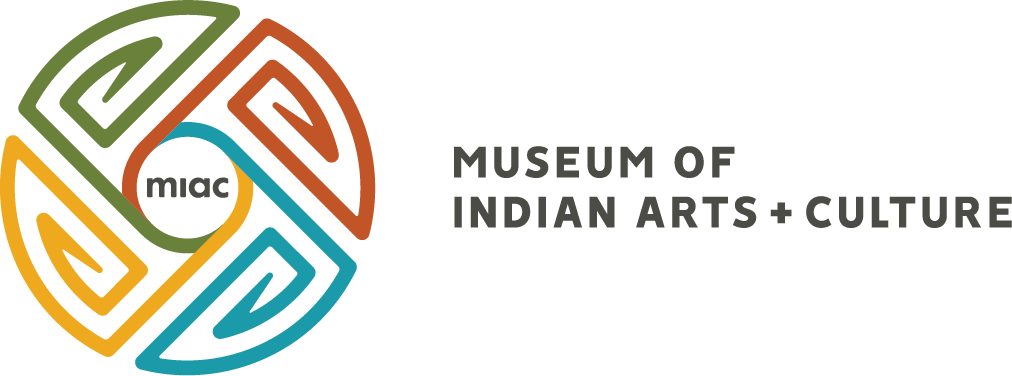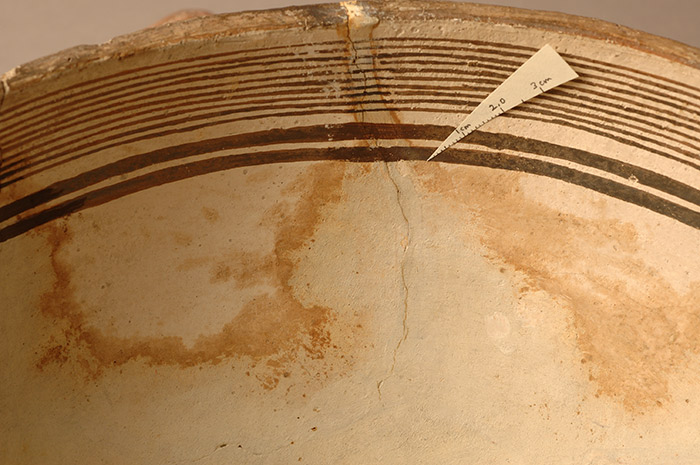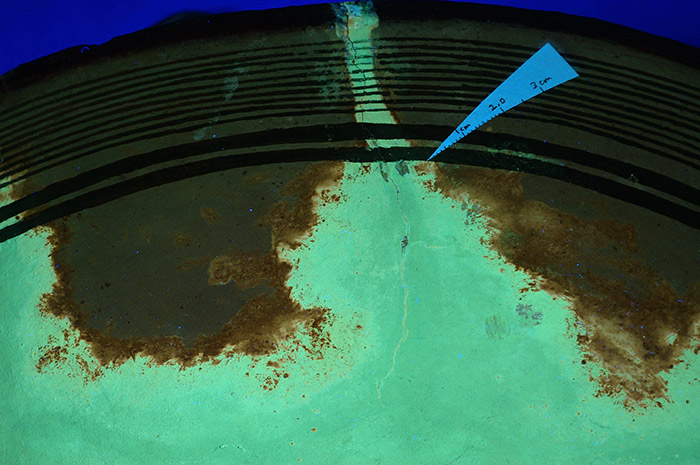Results of the IMLS survey
The survey was completed by MRD conservators in December 2012. The results of the survey provide solid groundwork for the next phase of the project, which is to carry out the conservation treatments necessary for the safe relocation of all ceramics, as well as to design an overall plan for the conservation of this irreplaceable collection.
Stabilization Needs
The results of the survey indicate that approximately 5% of the collection is unstable. These vessels are in urgent need of treatment before they can be handled or transported. Another 5% of the pottery is in pieces or needs re-housing for storage in order to avoid damage or loss. All of these pots, a total of 10% of the collection (about 500 pots), were assigned a Conservation Priority 1. Pots in this category should not be handled and therefore cannot be safely packed and transported to the new facility, used as a research resource, or for exhibit. Approximately half of these pots need either structural stabilization to prevent them from falling apart or re-assembly for those that have already begun to fall apart. Other structural conditions in need of treatment include major, de-stabilizing, open cracks and actively spalling surfaces.
Aesthetic Needs
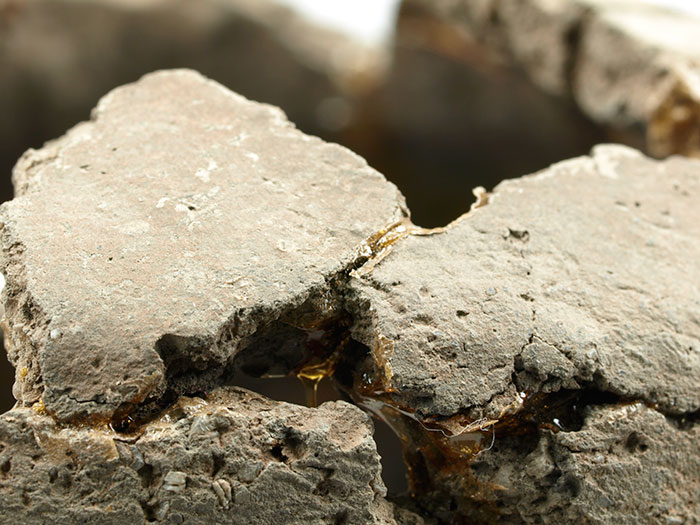 Approximately half of the pottery in the Museum whole vessel collections has been reconstructed; that is, sherds have been joined together with various adhesives to re-assemble broken pots. Much of this work was done in the early 20th century (before modern conservation labs) with adhesives that do not meet today’s standards for chemical stability and reversibility. The old adhesives are chemically unstable and have deteriorated, becoming yellowed and brittle. As a result, joins between sherds have weakened or are failing altogether. Chemical spot tests and FTIR (Fourier transform infrared spectroscopy) indicated that most of the old adhesive used to join broken sherds together is a nitrocellulose (like Duco Cement). Although it is inherently unstable, this adhesive is reversible—or removable— using organic solvents.
Approximately half of the pottery in the Museum whole vessel collections has been reconstructed; that is, sherds have been joined together with various adhesives to re-assemble broken pots. Much of this work was done in the early 20th century (before modern conservation labs) with adhesives that do not meet today’s standards for chemical stability and reversibility. The old adhesives are chemically unstable and have deteriorated, becoming yellowed and brittle. As a result, joins between sherds have weakened or are failing altogether. Chemical spot tests and FTIR (Fourier transform infrared spectroscopy) indicated that most of the old adhesive used to join broken sherds together is a nitrocellulose (like Duco Cement). Although it is inherently unstable, this adhesive is reversible—or removable— using organic solvents.
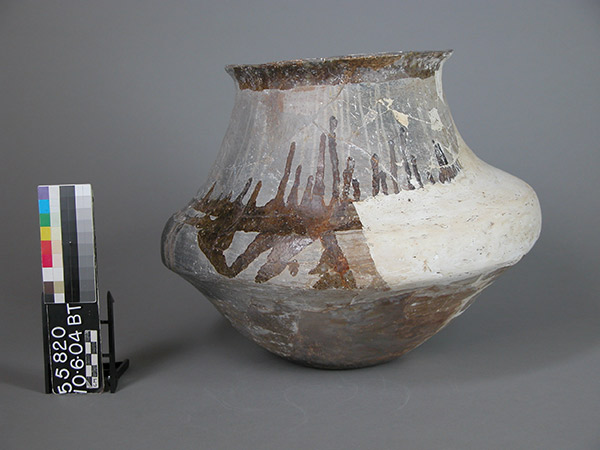 After the pots were reconstructed from sherds, there were usually some areas missing. These areas of loss range from small chips at the rim of the pots, to large losses comprising half of a pot, or more. In about 25% of the collection, these areas of loss have been filled in with plaster or other similar materials. These pots present a range of aesthetic problems such as over-painting of original surfaces, poorly executed and/or unnecessary fills, and excess oxidized (yellow–brown) adhesives. These condition issues do not affect the stability of the pot but affect the use of the collection for research, exhibit and education. These kinds of restorations are no longer acceptable in a research collection and are generally removed in favor of a more honest presentation of the pottery. Such condition problems converge with cultural perspectives on what is appropriate for these ceramics, how they should be presented, and ideas about preservation in general.
After the pots were reconstructed from sherds, there were usually some areas missing. These areas of loss range from small chips at the rim of the pots, to large losses comprising half of a pot, or more. In about 25% of the collection, these areas of loss have been filled in with plaster or other similar materials. These pots present a range of aesthetic problems such as over-painting of original surfaces, poorly executed and/or unnecessary fills, and excess oxidized (yellow–brown) adhesives. These condition issues do not affect the stability of the pot but affect the use of the collection for research, exhibit and education. These kinds of restorations are no longer acceptable in a research collection and are generally removed in favor of a more honest presentation of the pottery. Such condition problems converge with cultural perspectives on what is appropriate for these ceramics, how they should be presented, and ideas about preservation in general.
The goal of this kind of conservation treatment is to visually integrate the object; to remedy visually distracting non-original aspects of the object. In almost all cases, these problems are related to outdated restoration methods used in the early 20th century by well-meaning site workers, field school students or museum workers. These old restorations may be removed altogether, or re-surfaced and re-worked.
